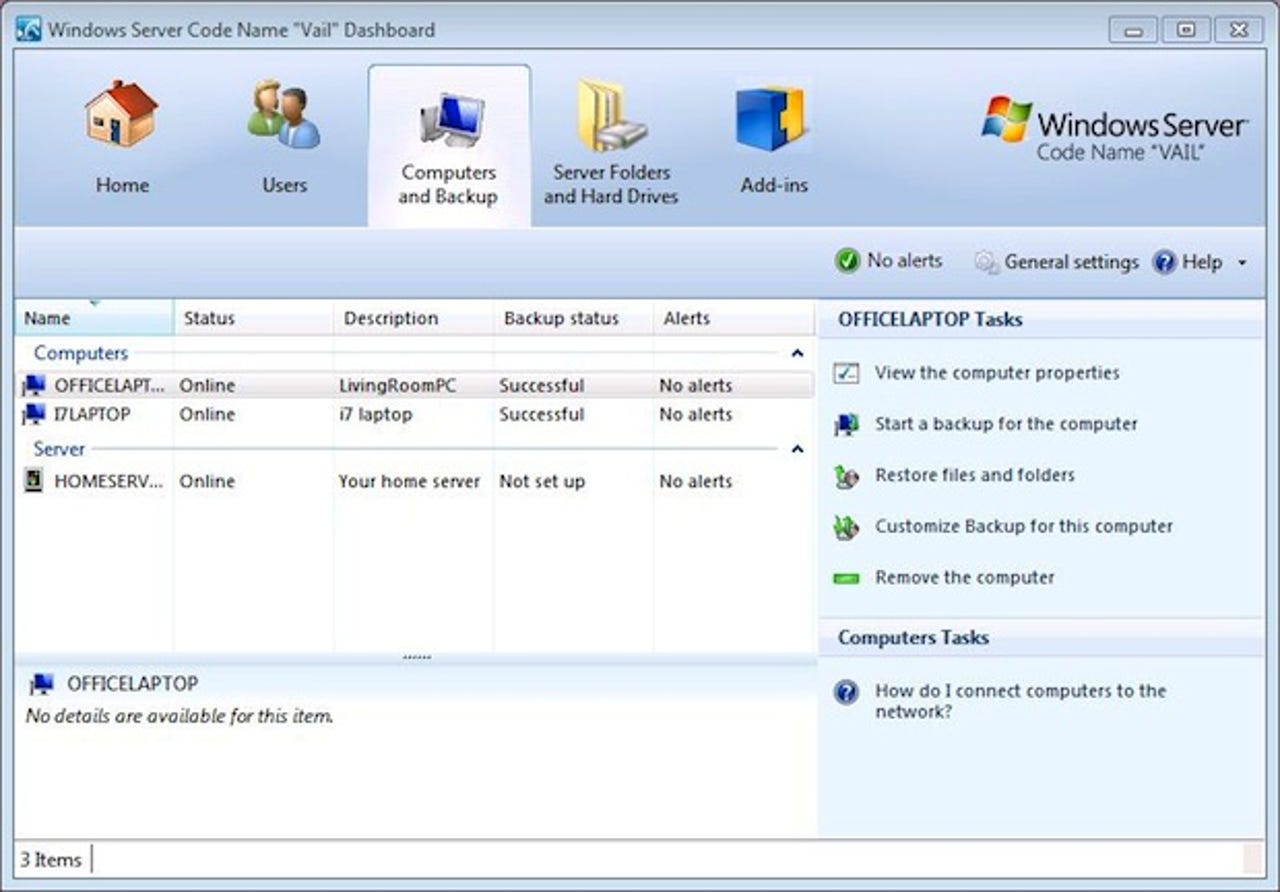Microsoft launches public beta of next-generation Windows Home Server

Microsoft has just announced the release of a public beta of the next version of Windows Home Server (WHS), the operating system that powers its SME and consumer network storage and backup devices, such as the HP StorageWorks X510 Data Vault we reviewed recently.
Codenamed 'Vail', this new version of WHS is notable chiefly for being based on Windows Server 2008 R2 — a major upgrade from the current version, which uses Windows Server 2003 SP2 as the underlying OS. Another departure is the move to 64-bit only operation, with no 32-bit version available. Minimum hardware requirements are modest: a 1.4GHz x64 CPU, 1GB or RAM and a 160GB hard disk.

There are no major changes to the core functions of WHS (there were rumours that Windows Media Center would be incorporated), but there are some major technical changes to the Drive Extender technology that provides WHS's data redundancy features. File storage is now block-based (and hence more like traditional RAID striping), rather than file-based. This means that WHS drives cannot be read outside of the WHS system, as they can with the present file-based Drive Extender. Individual hard disks larger than 2TB are now supported, as are iSCSI storage devices, and drive removal operations have been improved.
Headline new features include Windows 7 Homegroup integration and a major reworking of the various user interfaces. The administration console, now renamed the Dashboard, has been redesigned and the remote access pages have been totally revamped, with a much better interface for streaming photos, videos and music using a Silverlight-based media player. This interface offers much more scope for customisation by hardware manufacturers. A developer SDK has also been released on the Microsoft Connect site.
With Vail (and the recent announcement of an embedded version of Windows 7) Microsoft has almost achieved its goal of harmonising the OS kernel across its entire product family. When hardware products based on Vail finally appear, this move to the latest server OS could also help attract system administrators looking for a low-cost backup and/or remote access solution for small workgroups or branch offices, especially if ease of use from the user's perspective has been improved.
Kelvyn Taylor